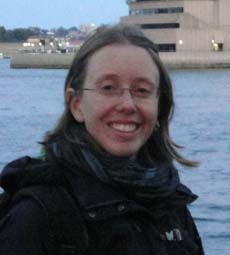
Researchers in Universitat de València’s Cavanilles Institute of Biodiversity and Evolutionary Biology have described for the first time the cellular components and the mechanisms involved in some phases of myxozoa proliferation, which are microscopic parasites causing deseases to commercial valuable fish in aquaculture and fishing industry. The research, published in the journal Plos ONE, has been carried out with the collaboration of two well-known European centres excelling in parasitology and aquaculture: Institute of Aquaculture at the University of Stirling (United Kingdom), and Institute of Parasitology at the Academy of Science of the Czech Republic.
Myxozoa are parasites related to cnidarian, which are primitive marine species of great diversity. Anemones, chorals and jellyfish are among myxozoa. The are reproduced through spores, no need of insemination, and the desease they cause on fish is due to the quick proliferation of the parasite. The consequences of their development remain still little known though.
Scientists in Universitat de València have focused their work on the study of the myxozoa Ceratomyxa puntazzi’s morphology, motility, structure and composition. This myxozoa was found in the bile of a bream -Diplodus puntazzo-, which is one of the species helping to diversify Mediterranean fish farming. The study describes for the first time the cellular components and the mechanisms involved in the motility of myxozoa’s proliferative states, as well as the role in their reproduction process.
One of the most interesting facts in the research is the use of confocal laser-scanning microscope, which has enabled the study of these pathogens’ anatomy and reproductive biology. ‘The application of in vivo techniques has enabled to anaylize the proliferation mechanisms and the movement of this kind of pathogen, which affects the fishes’ digestive system and might cause important losses to fish farms’, as Gema Alama has explained. Alama is the main researcher in the study published in Plos ONE and works at Cavanilles Institute, marine zoology unit. Nowadays, Alama is doing a postdoctoral research at the Institute of Parasitology of the Academy of Science of the Czech Republic.
At the same time, this research is part of PROMETEO project of Cavanilles Institute’s marine zoology unit, which is a programme financed by Generalitat Valenciana and devoted to support outstanding research groups in the Valencian Community.
The paper can be read on:
http://www.plosone.org/article/info%3Adoi%2F10.1371%2Fjournal.pone.0032679.
Last update: 24 de march de 2012 10:37.
News release



















